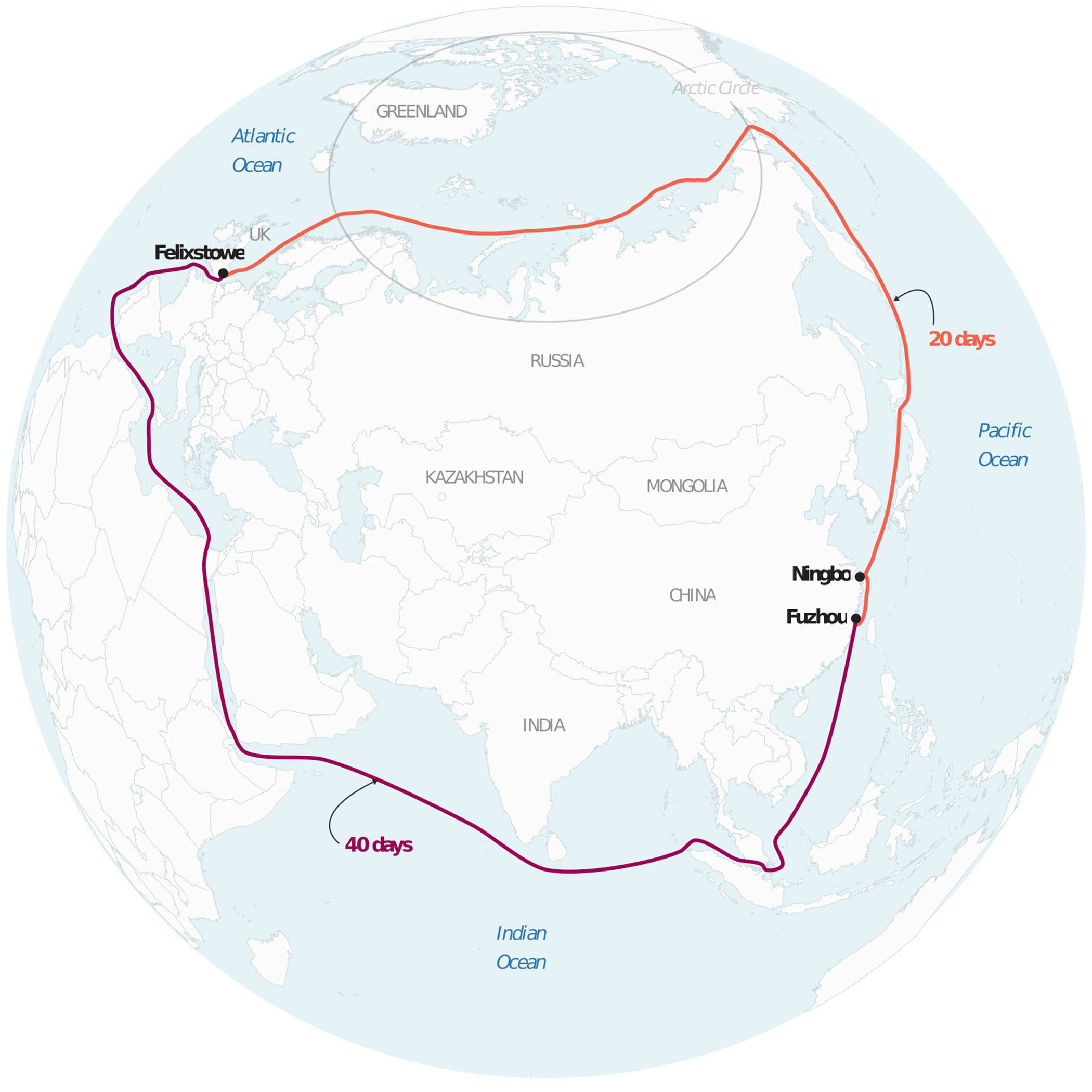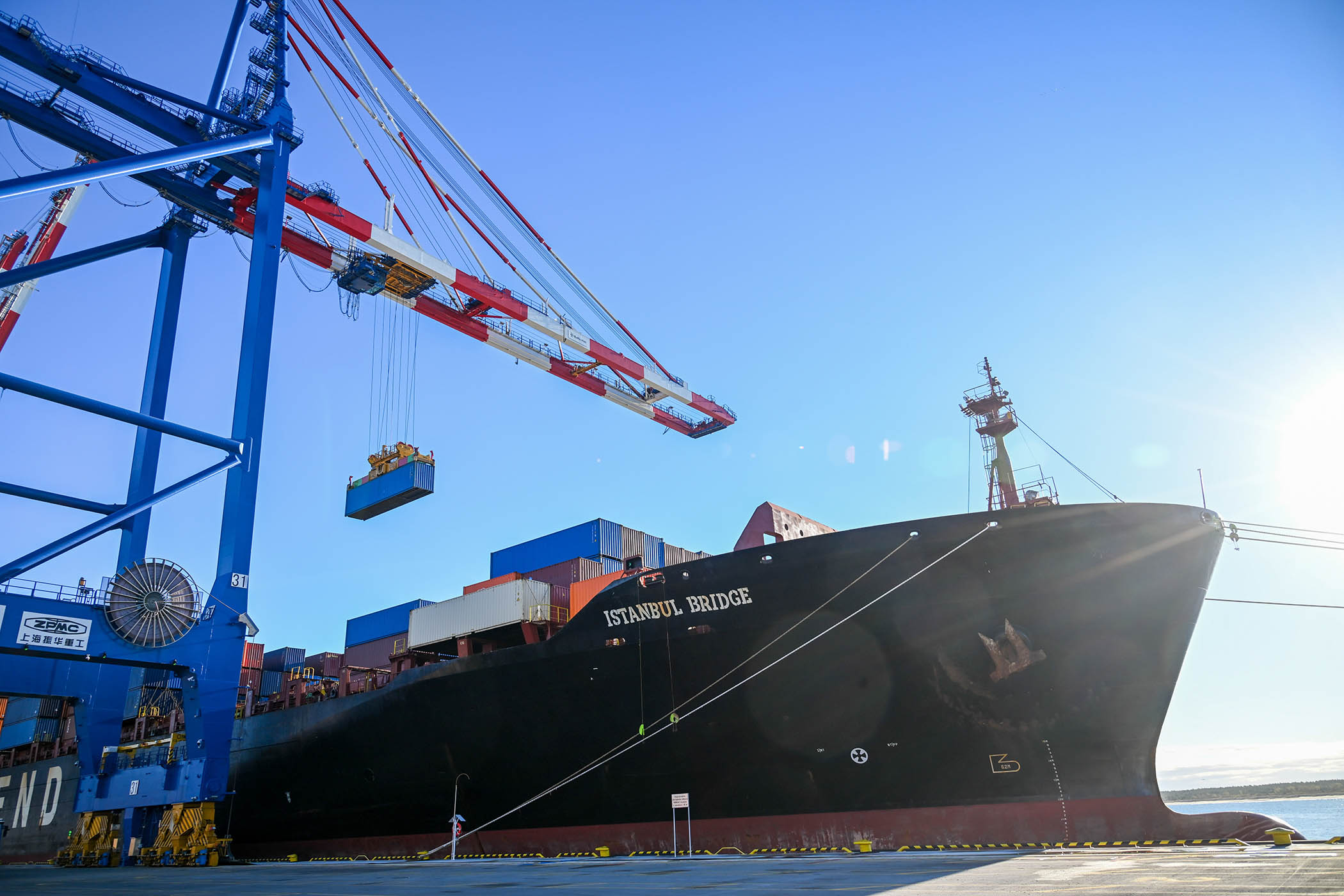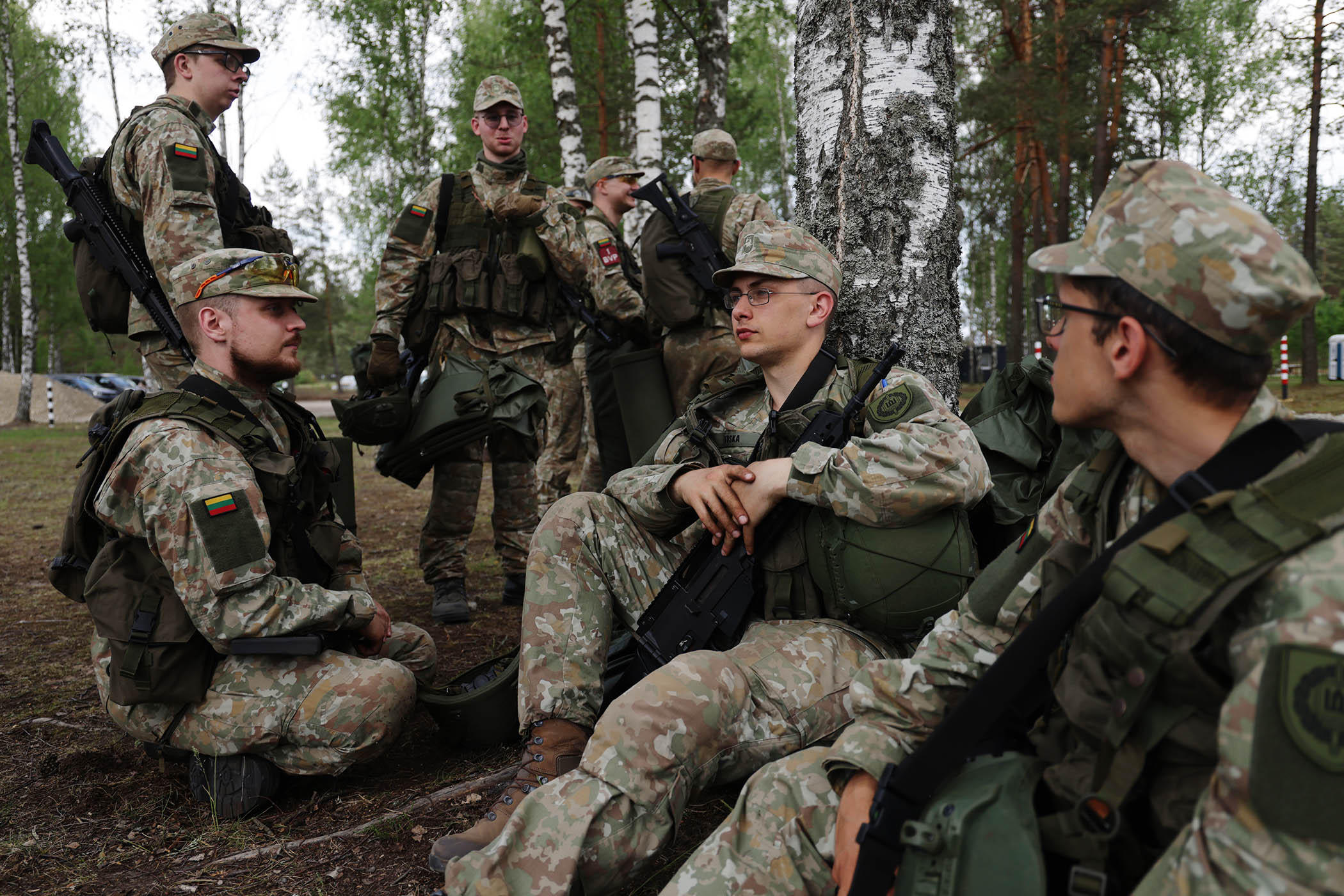The Istanbul Bridge docked in Felixstowe last week was heralded in China as a milestone.
For the first time, a container ship had travelled to Europe from China across the Arctic Sea, making its voyage from Ningbo to Suffolk in less than 21 days – about half the time the route normally takes via Suez, said Xinhua, the official state news agency.
It’s a route that has only been made possible by the melting Arctic ice sheet, and the fact that the voyage was possible adds to evidence of a potential environmental catastrophe. Yet Xi Jinping, Donald Trump and Vladimir Putin spy opportunities: for faster trade routes, tourism, better access for fishing fleets and to oil fields that may lie beneath the North Pole.
The Intergovernmental Panel on Climate Change (IPCC) predicts the Arctic may have ice-free summers by 2050, but the Arctic is warming three times as fast as the rest of the planet, according to the World Meteorological Organisation, so it may happen sooner. Without ice to reflect the sun’s rays, the ocean would heat more rapidly, causing more extreme weather events in Scandinavia and the UK.
The Istanbul Bridge, a Chinese-owned container ship, used the Northern Sea Route (NSR), the shipping lane that runs along Russia’s Arctic northern coastline from the Barents Sea to the Bering Strait. In Tudor times, explorers such as Hugh Willoughby tried and failed to find a way to sail to Russia via the north-east passage. It became possible only with modern ice-breaking ships, and Russia maintains a fleet of nuclear powered icebreakers.
Related articles:
Traffic along the NSR is increasing, according to the Centre for High North Logistics (CHNL) at Nord University in Norway, especially with Russian oil tankers avoiding western sanctions taking cargoes to China.
“By the beginning of October, we were up to 93 ships,” said Kjell Stokvik, CHNL head. “So we expect a record number this year. When the ice is melting, you also get disturbance in the weather conditions and that makes it more difficult to operate.”
However, Russia is keen to promote the NSR. It controls the shipping lane, and has stressed that shorter journeys would mean lower fuel emissions from shipping, which produces about 3% of global emissions, a figure that is rising.
“The development of infrastructure and more intense use of NSR will put at risk the fragile Arctic environment and will benefit the Russian regime”
Ksenia Vakhrusheva, Bellona Foundation
But the claim that ships take 40 days from China to the UK is not watertight. CHNL analysis shows that 27 days is more usual for voyages via Suez. Using the NSR reduces the journey time by about a quarter – consistent with shaving 2,706 miles off the Suez voyage of 10,540 miles.
“The Russian narrative that the NSR is a quicker, cheaper and environmentally friendly alternative to the Suez canal is false,” said Ksenia Vakhrusheva of the Bellona Foundation, a Norwegian environmental group. “The development of infrastructure and more intense use of NSR will put at risk the fragile Arctic environment and will benefit the Russian regime and give additional tools to spread its malign influence.”
Heavy fuel oil used by ships produces black carbon, or thick soot, that may have a greater impact in the Arctic, she said. Last week, more than 100 countries met at the International Maritime Organization in London to agree what would have been a landmark deal to impose a small levy on carbon emissions, but the US and Saudi Arabia engineered a delay after Trump described the deal as a “green scam” and threatened sanctions on countries supporting it.

Oil spills are another risk. The Arctic Metagaz, part of the “shadow fleet” of Russian tankers avoiding sanctions, was stuck in ice for a week in September.
“Hiding accidents is a common practice there,” Vakhrusheva said. “After the incident with the Arctic Metagaz, the vessel’s position was completely removed from the public records of the NSR administration.” No accident statistics for the NSR have been published since 2023.
To become a stable shipping lane, the Northern Sea Route needs predictable weather conditions. Yet the melting ice cap is likely to lead to polar lows – sudden, intense and dangerous storms that would delay ships, or worse. In 1952, a polar low killed 79 sailors in shipwrecks.
“As the climate warms and the Arctic sea ice retreats, we expect some intense storms, such as Arctic polar lows, to form further northwards as the now open ocean will be able to input heat and moisture directly into the atmosphere,” said Prof Len Shaffrey, director of marine science at the National Oceanography Centre (NOC) in Southampton.
Shaffrey leads CANARI, a five-year programme using Met Office climate data to model – and hopefully forecast – how the warming Arctic could cause more intense storms and longer droughts in the UK.
Jo Hopkins, Arctic lead at the NOC, said the lack of sea ice created commercial opportunities but the environmental risk could not be ignored.
“These risks include pollution, contaminating the delicately balanced environment, increased noise, which is likely to disrupt marine mammal migration and communication channels, while also increasing the risk of ship strikes,” she said.
Photograph by Andrzej Jackowski / Avalon



